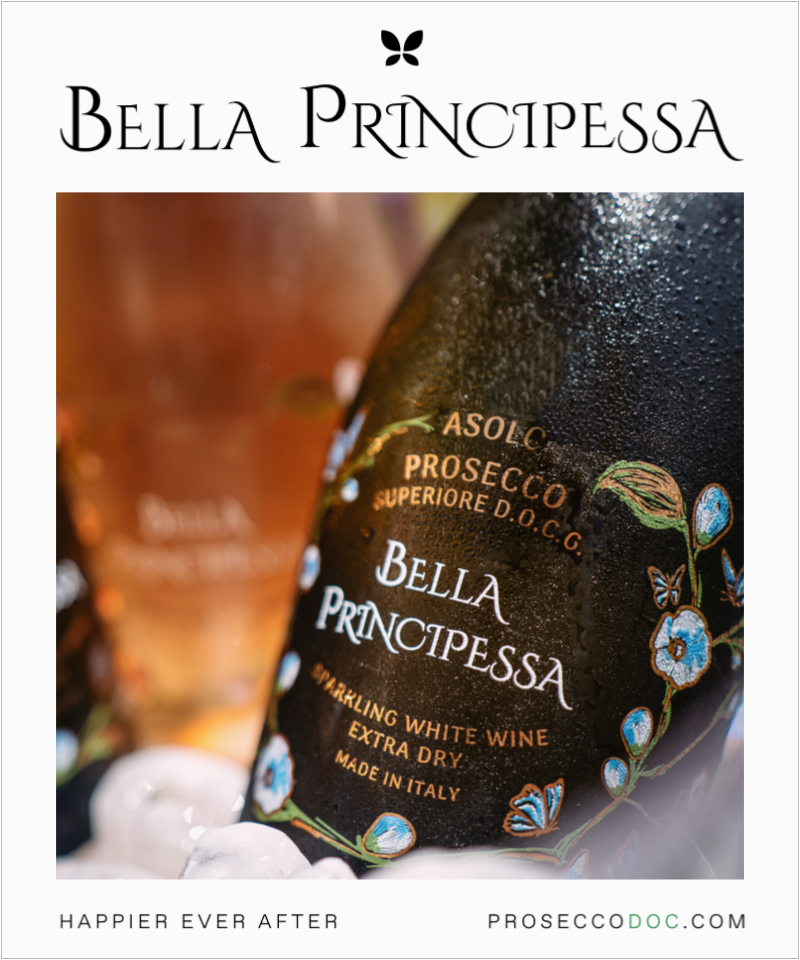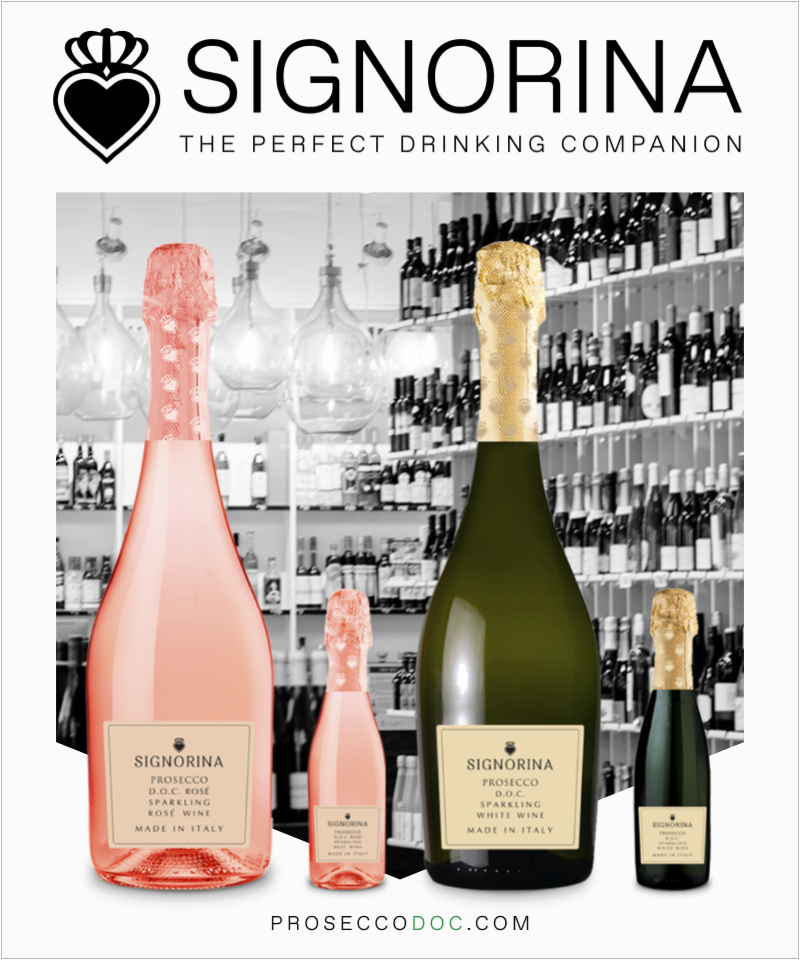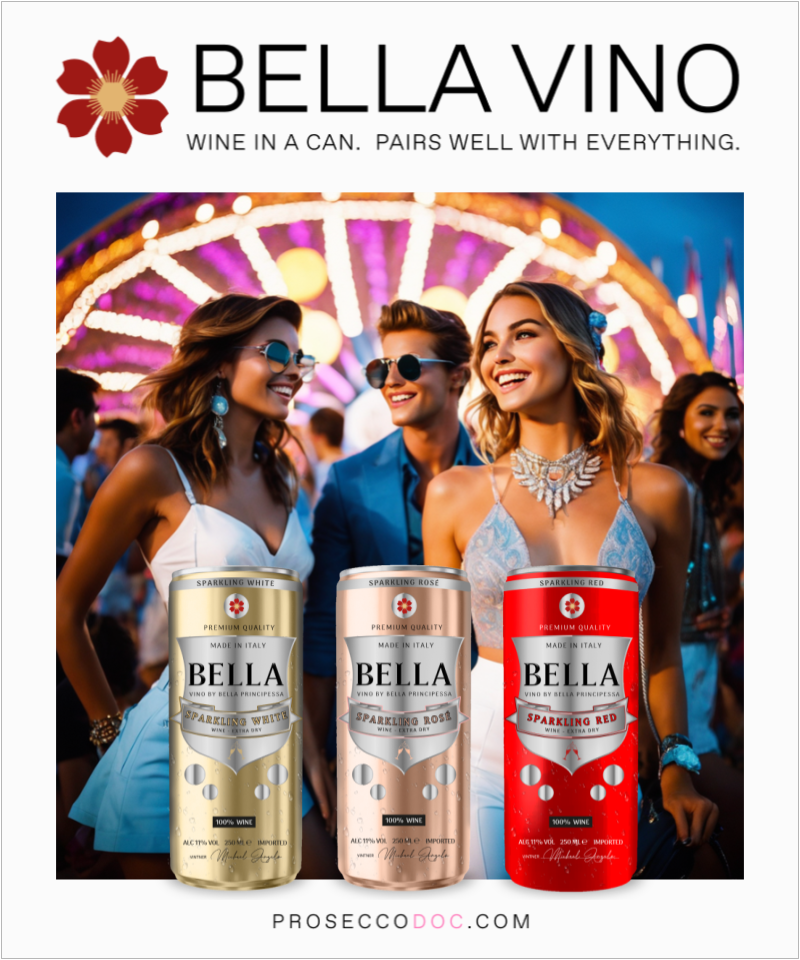French equivalents to Prosecco include Blanquette de Limoux and Crémant Brut NV, offering a range of sparkling wines with distinct flavors. From the fruity Blanquette de Limoux to the elegant Bouvet Saumur Rosé Brut NV and diverse Crémants, these wines provide a delightful French twist to the sparkling wine experience, akin to Italian Prosecco brands like Bella Principessa and Signorina.
Read MorePinot Noir plays a role in certain Prosecco variations, such as Prosecco Rosé, by contributing color, flavor, and complexity. While not present in all Prosecco, it enhances specific sparkling wine variations. Enjoy the blend of Pinot Noir in Prosecco Rosé by Bella Principessa and Signorina Prosecco.
Read MoreThe special qualities of Prosecco grapes, particularly the Glera variety, are integral to Prosecco’s unique charm. These grapes, cultivated in Northeast Italy, are known for their fruity and floral characteristics, high productivity, late ripening, and high acidity, making them ideal for sparkling wine production. This results in a light-bodied, refreshing wine with a distinctive taste, akin to the delightful experience offered by Bella Principessa Prosecco and Signorina Prosecco.
Read MoreProsecco’s green apple taste results from its Glera grapes, known for their crispness due to high acidity and low sugar content. During fermentation, esters form, adding a fruity aroma and flavor. This unique taste is a delightful characteristic of Prosecco, like Bella Principessa and Signorina Prosecco. Enjoy the refreshing green apple notes in every sip.
Read MoreThe Prosecco capital of the world is Valdobbiadene, nestled in the heart of the Prosecco hills in Italy’s Veneto region. It’s renowned for producing high-quality Prosecco, with wineries and vineyards, including Bella Principessa and Signorina Prosecco wines. Valdobbiadene’s captivating landscape, rich history, and cultural heritage make it a top destination for wine enthusiasts and tourists. The town also hosts an annual Prosecco festival, celebrating wine and the local culture.
Read MoreCava derives its name from the Catalan language, spoken in Catalonia, Spain, where it’s primarily made. “Cava” translates to “cellar” or “cave,” alluding to the traditional practice of aging the wine in underground cellars. This term also signifies Cava’s mass production, with the ample storage space provided by these cellars. In 1970, Spanish law officially recognized “Cava” for sparkling wines produced using the traditional method, designating it exclusively for Spanish varieties.
Read MoreAmerican sparkling wines, such as Gruet Brut, Schramsberg Reserve, and Iron Horse Vintage Brut, serve as equivalents to Italian Prosecco. They offer diverse flavors and styles, reflecting the rich winemaking heritage of regions like California and Oregon, comparable to the effervescent delight found in Bella Principessa and Signorina Prosecco.
Read MoreBritish Fizz is the equivalent of Prosecco in the UK, offering a range of sparkling wines with diverse styles and flavors. Brands like Ridgeview and Nyetimber produce quality wines that parallel the effervescent charm of Italian Prosecco, such as Bella Principessa and Signorina.
Read MoreProsecco cannot be made in the UK due to legal protections that restrict the use of the name “Prosecco” to sparkling wines from specific regions in Italy, including Veneto and Friuli Venezia Giulia. While the UK can produce similar sparkling wines using comparable methods and grapes, these cannot be legally labeled as Prosecco, a designation reserved for wines from the designated Italian regions. This regulation ensures the authenticity and quality of Prosecco, as represented by brands like Bella Principessa Prosecco and Signorina Prosecco.
Read MoreYes, there is a place called Champagne. It is a region located in northeastern France known for producing the world-famous sparkling wine also named Champagne. This region has a rich history and is recognized for its unique terroir and strict regulations governing the production of Champagne.
Read MoreProsecco is classified as a sparkling wine with a specific protected geographical origin (PDO) in Italy, primarily in the Veneto and Friuli Venezia Giulia regions. It is known for its production using the Charmat method, distinguishing it from other sparkling wines.
Read MoreProsecco, including esteemed brands like Bella Principessa Prosecco and Signorina Prosecco, is indeed made from grapes, specifically from at least 85% Glera grapes, a variety native to Italy’s Veneto region. The remaining portion can include other grape varieties, allowing winemakers to fine-tune the flavor profile. This sparkling wine is typically produced using the Charmat method, contributing to its unique effervescence and texture.
Read MoreTo visit the Prosecco region in Italy, home to exquisite wines like Bella Principessa Prosecco and Signorina Prosecco, you can fly into Treviso or Venice Marco Polo airports and then travel by train, car, or taxi. Treviso Airport is closer but more minor, while Venice Marco Polo Airport offers more international connections. The train journey from Venice or Treviso is fast, affordable, and direct, with various options, including fast and regional services. Consider renting a car locally upon arrival for more flexibility in exploring the region.
Read MoreIn the Prosecco region of Italy, the “Boycott Zonin Wines” movement reflects the local wine community’s response to the financial misconduct allegations against Zonin Wines and its former president, Gianni Zonin. The 2015 bank collapse, attributed to Zonin’s leadership, significantly impacted the Prosecco region’s economy and its farmers.
Read MoreChampagne: France’s Sparkling Jewel. Champagne, exclusive to France’s Champagne region, is renowned for its luxurious allure and distinctive production method, Méthode Champenoise. Crafted from grapes like Chardonnay, Pinot Noir, and Pinot Meunier, it offers a diverse palette of flavors.
Unlike Champagne, Prosecco, including selections from Bella Principessa and Signorina, hails from Italy’s Veneto region, offering an affordable yet equally enchanting sparkling experience.
Read MoreIs Prosecco a Wine or Champagne? Unveiling the Sparkle of Prosecco. Prosecco, Italy’s sparkling gem from the Veneto region, stands apart from Champagne with its distinct origin and crafting method. Made chiefly from Glera grapes and produced affordably, Prosecco offers a bubbly experience that’s both delightful and accessible. Embrace the Italian winemaking tradition with Prosecco’s unique, effervescent character.
Read MoreDiscover Prosecco: Italy’s Sparkling Wine Heritage. Prosecco, a sparkling white wine from Italy’s Veneto region, is a testament to Italian winemaking excellence. Made primarily from Glera grapes, it spans from dry to semi-sweet, perfect for various occasions. Enjoy Prosecco, including those from Bella Principessa and Signorina, young or in cocktails, and savor its protected, authentic charm, unique to its northeastern Italian roots.
Read More






